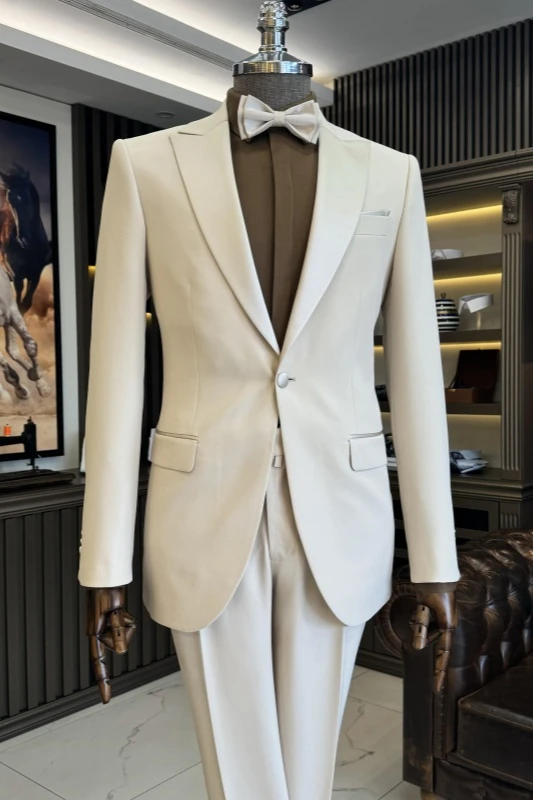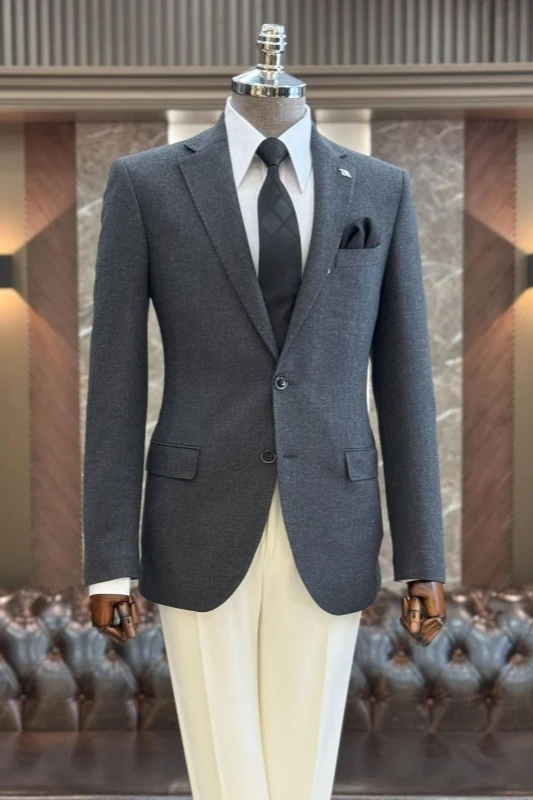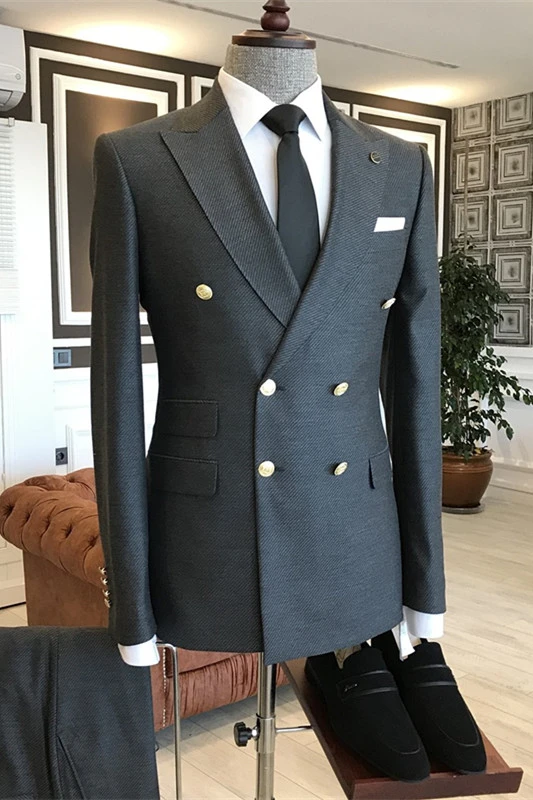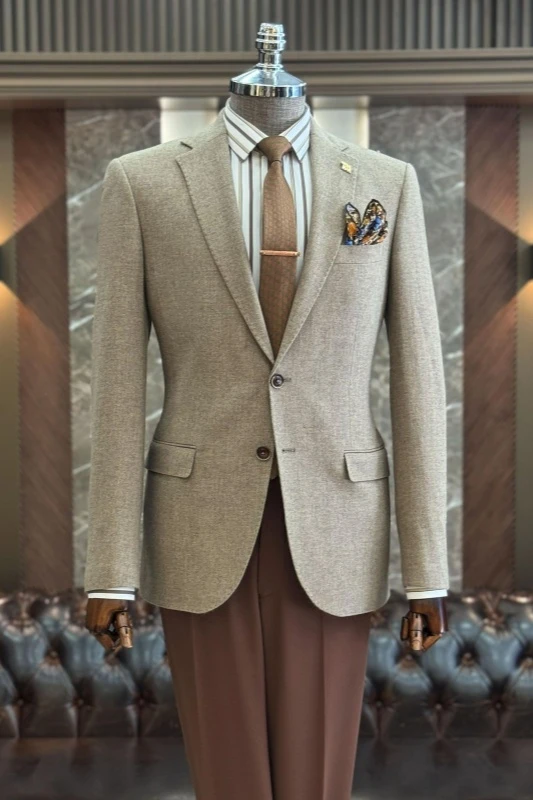The Introduction of Single-Breasted and Double-Breasted Suits
These two styles of single-breasted and double-breasted differ not only in appearance but also in formality, fit, and historical context. Below is a detailed exploration of their characteristics, origins, and how to wear them appropriately.

1. Single-Breasted Suits: Classic and Versatile
Definition and Structure
A single-breasted suit features a single column of buttons, typically with 1, 2, or 3 buttons (though 2-button is the most common). The front panels overlap slightly, with one side covering the other when fastened. This design creates a clean, streamlined silhouette that flatters most body types.
Historical Roots
Originating in the late 19th century, single-breasted suits gained popularity as menswear shifted toward more relaxed, everyday attire. They became a staple in business and casual wardrobes, contrasting with the more formal double-breasted styles of the time.
Key Characteristics
- Fit and Silhouette: Generally offers a more relaxed fit, though modern tailoring can create a slim, contemporary look. The single row of buttons draws less attention to the midsection, making it a flattering choice for those who prefer a subtler aesthetic.

- Formality: Ranges from business casual to semi-formal.

2. Double-Breasted Suits: Bold and Regal
Definition and Structure
Double-breasted suits feature two overlapping columns of buttons, with the wearer typically fastening one column (usually the left) to secure the jacket. They often have 4–6 buttons, though only 2–3 are functional. The design creates a wide, peaked lapel effect, emphasizing the shoulders and creating a strong, authoritative silhouette.
Historical Roots
Originally worn by sailors and military officers in the 19th century, double-breasted suits evolved into a symbol of sophistication and power. They were popularized in formal menswear during the early 20th century and later adopted in women’s fashion for structured, avant-garde looks.
Key Characteristics
- Fit and Silhouette: Designed to be more structured, with a cinched waist and broad shoulders. The overlapping panels add thickness to the chest area, making it ideal for those who want to appear more imposing or athletic.
- Formality: Generally more formal than single-breasted suits, especially in dark fabrics like navy or black. Often seen in tuxedos, business suits, or ceremonial attire.


3. Choosing Between Single-Breasted and Double-Breasted
- Occasion:
- Single-breastedsuits are ideal for daily work, casual events, or when versatility is key.

- Double-breastedsuits shine at formal events, business meetings, or when making a strong style statement.

- Body Shape:
- Single-breasted suits offer flexibility for all builds, especially those who prefer a less structured look.
- Double-breasted suits can flatter athletic or broad-shouldered individuals, but tailor-fitting is crucial for shorter or slimmer wearers.
Conclusion
Whether you opt for a single-breasted or double-breasted suit, the choice hinges on personal style, occasion, and body type. Single-breasted suits remain the go-to for everyday sophistication, while double-breasted designs exude authority and timeless charm. Both styles, when well-tailored, embody the essence of classic tailoring and offer endless possibilities for modern wardrobes. Understanding their nuances allows you to wield suits as powerful tools of self-expression and refinement.

